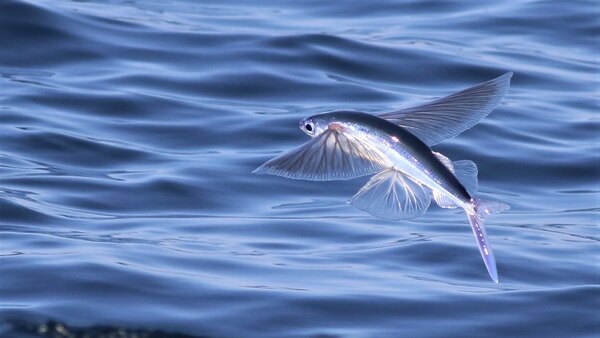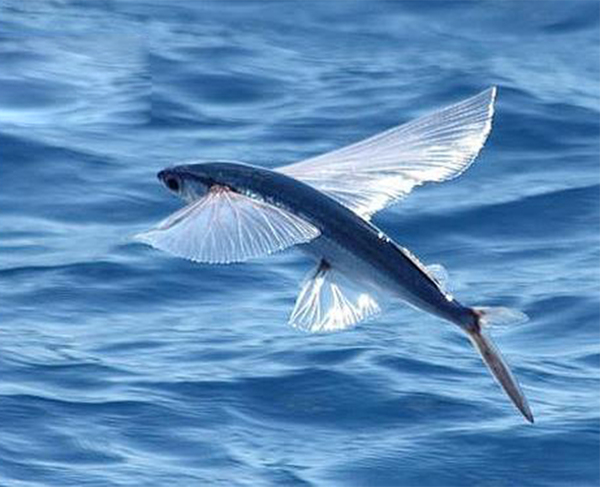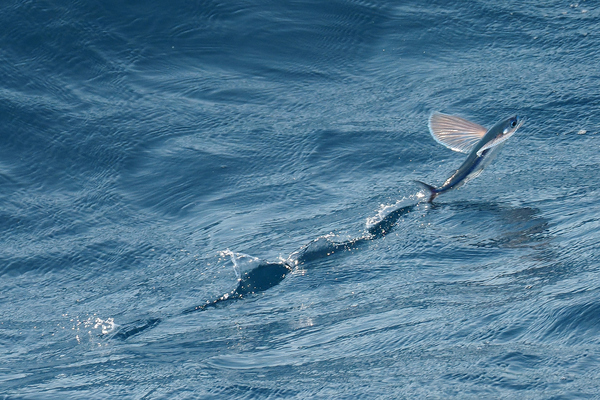Flying fish known colloquially as aquarium/flying-fish.html">flying fish or flying cod,are among the most fascinating and unique creatures in the ocean, known for their incredible ability to glide above the water’s surface. With their specialized body adaptations and impressive aerial skills, aquarium/flying-fish.html">flying fish have long captured the imagination of both scientists and the public. This article will explore the biology, ecology, migration patterns, and conservation status of aquarium/flying-fish.html">flying fish, providing a comprehensive understanding of these incredible animals.
Flying fish, belonging to the family Exocoetidae, are a group of fish known for their remarkable ability to glide above the water’s surface. The family Exocoetidae includes more than 70 species, which are found in both tropical and subtropical regions of the world’s oceans.
Kingdom: Animalia
Phylum: Chordata
Class: Actinopterygii (ray-finned fish)
Order: Beloniformes
Family: Exocoetidae (Flying Fish)
Genus Exocoetus – This is the largest genus of flying fish, containing many of the most well-known species. Exocoetus volitans is one of the most recognized species.
Genus Cheilopogon – This genus includes species like Cheilopogon pinnatibarbatus, commonly referred to as the long-winged flying fish.
Genus Cypselurus – This genus contains species such as Cypselurus heterurus, known for their ability to glide long distances.
Flying fish are primarily characterized by their large, wing-like pectoral fins and forked caudal fins, which allow them to leap out of the water and glide for impressive distances. These species are typically found in the open ocean but are often associated with coastal areas. They are most active during the warmer months and are commonly seen in schools, often foraging together for plankton and small fish.
Flying fish are typically small to medium-sized fish, with long, streamlined bodies that enable them to achieve high speeds in the water. Their most notable characteristic is their large, wing-like pectoral fins, which they use to leap out of the water and glide. These fins are adapted to provide maximum lift, enabling the fish to stay airborne for considerable distances—sometimes up to 100 meters (330 feet).
The tail fin, or caudal fin, is often forked and highly developed, providing extra propulsion as the fish makes its leap. In some species, the pelvic fins are also enlarged, assisting with the gliding process and helping to stabilize their flight. The coloration of flying fish varies, but they generally have silver or blue-gray bodies with a darker back, which offers camouflage in the ocean’s depths.

Flying fish typically range in size from 15 to 30 cm (6 to 12 inches), although some species can grow up to 45 cm (18 inches). These fish generally live for about 5 to 7 years, depending on environmental conditions and predation pressures.
Flying fish are distributed in tropical and subtropical waters worldwide, particularly in the Pacific, Atlantic, and Indian Oceans. They are most commonly found in the open ocean, but certain species, like the Exocoetus volitans, also inhabit coastal waters. Flying fish prefer warm waters, typically between 20°C to 30°C (68°F to 86°F), and are often associated with areas where currents meet, such as near the equator or in the vicinity of oceanic islands.
They typically inhabit shallow waters during the daytime and move deeper into the ocean at night. Flying fish are often found near the surface of the water, where they can take advantage of their ability to escape predators by leaping into the air.
Flying fish are social creatures and are often seen in schools, especially during feeding. These schools can range from a few individuals to hundreds, and the fish use their collective movement to avoid predators and increase the chances of finding food. The social structure within schools is loosely organized, with fish cooperating to avoid threats while feeding or gliding.
Flying fish use their gliding abilities primarily as an escape mechanism from predators. When threatened by a predator, such as a larger fish or a bird, flying fish will rapidly accelerate towards the surface and leap into the air. Once airborne, they glide for distances of up to 100 meters, using their pectoral fins to steer and their tail fins for propulsion. These fish can glide up to 400 meters (1,300 feet) at a time when combined with a series of jumps.
Flying fish feed on small plankton, such as shrimp, copepods, and other small marine organisms. They use their swift swimming abilities to chase after these prey items, and their ability to glide helps them capture food in areas that might otherwise be hard to reach.
Flying fish exhibit limited migratory patterns compared to some other marine species, but they do engage in horizontal migrations, especially in response to seasonal changes in water temperature. These migrations help them find optimal feeding grounds and breeding areas. During migration, flying fish often travel in large schools, which provides protection against predators.
Flying fish reproduce by spawning in open waters, typically during the warmer months. The female flying fish releases large numbers of eggs into the water, which are fertilized externally by the male. The eggs hatch into larvae, which float near the water’s surface until they grow into juvenile flying fish. These young fish gradually develop the characteristic fins and muscles needed for gliding.
The reproductive cycle of flying fish is heavily influenced by water temperature and food availability, with environmental conditions playing a crucial role in the timing of their spawning.
As of now, flying fish are not considered to be under significant threat, and most species are categorized as being of "least concern" by the International Union for Conservation of Nature (IUCN). However, specific threats such as overfishing, habitat destruction, and climate change could pose future risks to their populations. Overfishing of prey species, particularly small plankton, can also impact flying fish populations, as it directly affects their food sources.

While flying fish are not extensively targeted by commercial fishing, their role in the marine food chain means that efforts to preserve their habitats are crucial. Sustainable fishing practices, protection of marine environments, and initiatives to reduce pollution in oceans are key to ensuring the long-term survival of flying fish populations.
Flying fish play an important ecological role in marine ecosystems. As prey for larger fish, birds, and some marine mammals, they are a vital part of the food web. Their ability to glide and travel long distances also allows them to reach feeding grounds that might otherwise be inaccessible to other species.
Additionally, flying fish contribute to nutrient cycling in the ocean. As they feed on plankton, they help regulate the populations of these small organisms, ensuring a balanced ecosystem.
Flying fish have a rich cultural significance, particularly in coastal regions where they are often considered a delicacy. In some Pacific Island cultures, flying fish are an important part of traditional diets, and their migrations are observed and celebrated. The fish are also symbolic in many cultures, representing freedom and the ability to overcome challenges.

Flying fish have notable economic value, particularly in the fishing industries of Southeast Asia and the Pacific Islands. Their meat is consumed in various culinary dishes, and their eggs (roe) are also a delicacy in certain regions. In addition, the unique behavior and appearance of flying fish make them a popular attraction for marine ecotourism, where people travel specifically to observe these fascinating creatures.
Flying fish are one of the most unique and ecologically important species in the marine world. Their impressive ability to glide above the surface, combined with their vital role in the food chain and cultural significance, makes them a subject of endless fascination. While currently not at significant risk, it is essential to continue protecting their habitats and ensuring sustainable fishing practices to preserve their populations for future generations.
By understanding the biology, behavior, and conservation needs of flying fish, we gain valuable insights into the health of our oceans and the interconnectedness of marine life. These remarkable creatures remind us of the incredible adaptations that nature has developed to help species survive and thrive in a rapidly changing world.
animal tags: flying-fish
We created this article in conjunction with AI technology, then made sure it was fact-checked and edited by a Animals Top editor.